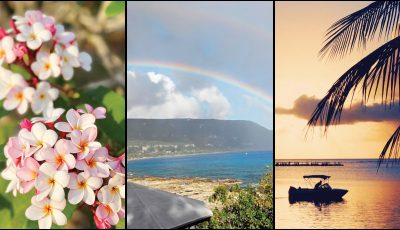Repair of pathway lights in the works
The Marianas Visitors Authority is moving forward with reenergizing the lights along the Beach Road pathway, with a timeline of possibly six months to have assessment, bidding, and construction of new path lights completed.
No pathway lights remain functioning for the pathway, leaving long patches of darkness for tourists and residents at night. Much of the electrical components have been stripped of copper wires by thieves
Sonya Dancoe, professional engineer, of SPDA Engineering Firm, gave a project update to MVA board at their meeting last Friday, saying an inventory was done for light fixtures from Kilili Beach/Gilbert C. Ada Gymnasium to the American Memorial Park and the Paseo de Marianas and Bank of Saipan areas as well.
There are a total of five electrical cabinets, with three along Beach Road, but “without any further budget for electrical investigation” they could not determine if these were functional, Dancoe said.
To solve this, a two-phase approach was taken. The first phase would be for “assessing pathways” and the latter for construction.
It was decided that a master electrician be hired to do the tests, to see if fixtures can be salvaged or replaced. But no electrician responded, save one, for a $7,500 proposal, it was gathered.
This proposal would entail electrical investigation, specifications for conduits, and restoring them and entails design work and random site inspection.
This first phase, according to MVA managing director Perry Tenorio, would “find out if there any breaks in conduits” so that the company the project is bid to “will have a better understanding of what’s wrong,” he said.
“Cleaner and cooler lighting fixtures” like LED lights are proposed, according to Tenorio.
Board director Jerry Tan called reenergizing the pathway one of MVA’s most important projects.
“We would like to have tourists use [the path] more” especially at night, he said.
He inquired into the long-term maintenance of the lights, recommending also that operation hours are from 6pm to 6am to “make our island safe.”
“A lot of our tourists leave and arrive around 1am and 3am. To have a good “first and last impression is always nice,” he said.
Tan said visitors have told him that the island is “very dark.” “We need to brighten up the island a little more” to feel safe, he added.
In trying to answer the question, “Who is the keeper of this project?” Dancoe found out that CIP office and the Department of Public Works did not have any current plans for the project. Tan, in turn, recommended a memorandum of understanding between MVA and DPW for “commitment from the very beginning” to protect MVA’s investment and ensure long-term maintenance, he said.
MVA vice chair James Nelson further recommended that MVA hire someone internally to “have a better handle” on these interagency projects to act as a “liaison” in protecting the investment.
A project timeline was also discussed. Assessment and design would take 30 days, advertising or the request for proposal would take a period of one month, and construction length for the project could be dictated by MVA, for a possible timeline of six months.



























